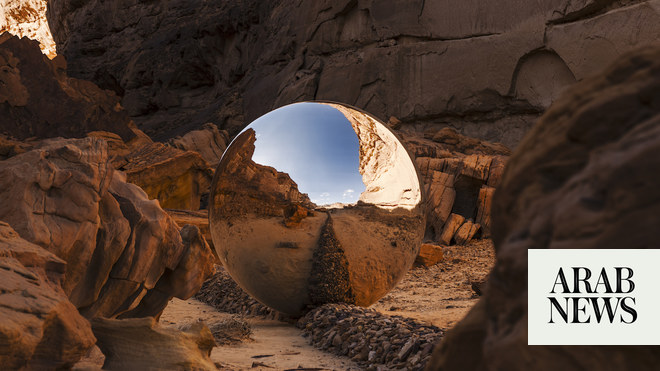
This year’s exhibition features more than 200 works from 40 artists
DUBAI: This year’s Ramallah Art Fair runs until Feb. 12 at Zawyeh Gallery in Ramallah, but can also be viewed online via the gallery’s website. This third edition of the show features more than 200 artworks, contributed by 40 Palestinian, Arab and international artists — the first time it has featured non-Palestinians.
For the latest updates, follow us on Instagram @arabnews.lifestyle
Zawyeh director Ziad Anani said in a press release: “Artists from Iraq, Lebanon, Syria, Norway, Spain, and Germany will exhibit for the first time in Palestine as part of our efforts to build bridges between Palestine and the world.”
While some of the artists may come from outside its borders, Palestine remains the main theme of most of the work on display, which includes paintings, photographs and sculptures.
Here, we take a look at some of the highlights from the show.
Amir Hazim
‘Witness’
This image comes from the young Baghdad-born visual artist’s black-and-white photography series “Above The Damage,” which chronicles the protests of 2019 on the streets of Baghdad. “This is the story of Baghdad’s renaissance: a generation whose dreams and hopes are hanging onto a thread but together weave a movement of bravery and social change,” the artist’s statement reads. “Instead of presenting these snapshots as reportage, (the photographs) speak of the Baghdad youth at the fringes of these political protests.”
The gallery’s show brochure says: “Growing up in Baghdad, where violence and disappointment have gradually become normalized, Hazim stands out. In a land where dreams have been crushed, he never lost his creative drive. His portraits purposefully show … women and men who are ready to tell their own story away from Western media and occupation. These images represent a new chapter for a city and country that has suffered from massive deaths and casualties for over two decades.”
Bryanna Millis
‘I Belong There’
Millis’ collage is part of her “multisensory” project “Unfortunately, it was Paradise,” which is named after a poem by Palestinian hero Mahmoud Darwish. Millis was born in America, but has lived and worked in Palestine for many years, and many of the works in her project are based on interviews with Palestinians. Millis says she hopes the project invites viewers “to reflect on exile and belonging through lenses of history, lived experience, and the spiritual experience of oneness — unity between the energies of the self and the universe,” as well as to explore “what it means to create an internal sense of belonging in the world.”
Ghada Hassanien
‘Rhythm 2’
The Belgium-based Palestinian photographer contributes a series of black-and-white images focusing on tree branches as living bodies. “When I photograph nature, I become her breath,” Hassanien says in her artist’s statement. “And the breathtaking rise and fall of this breath possesses me and stirs my soul. And I become the pulse of this breath; its inclination, its hints, its sway, its echo, its incantations, its ululations, the rhyme and rhythm which become secret luminescent threads for me to weave a tapestry for her ecstatic downpour.”
Inass Yassin
‘Tree and Bird’
Yassin uses idyllic scenes such as this one in a nostalgic way, in keeping with her series “We Took It For Granted,” which, she says in her artist’s statement, “is a notion that applies to our constant experiences of losing a piece of a place or a memory after they are ripped off — forcefully, not naturally.”
Majd Masri
‘Hidden 1’
Masri’s painting is one of several abstract works on display at this year’s fair. The Jerusalem-born painter and art teacher says she examines “the creation, nostalgia, and the use of contradictions from daily lives (to) explore and interact with the personal and social scenes trying to find some answers.”
Monther Jawabreh
‘Edge 1’
Jawabreh was born in Palestine’s Al-Aroub refugee camp. His “Edge” works, according to the gallery, “weave stories from the past with stories in the present.” In his artist’s statement, Jawabreh writes that by re-cutting old pencil drawings and different materials “as an attempt to dismantle the concept of demolition and construction,” he seeks “to liberate the artwork from fixed time … to become a force of construction and deletion between the past and the temporality of the work itself.”












